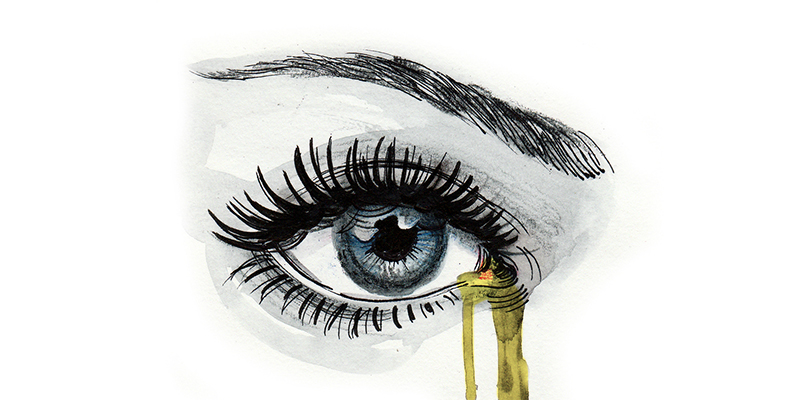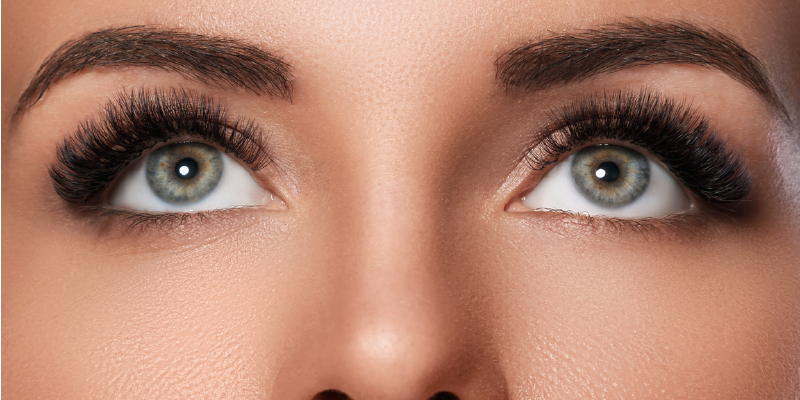Pink eye, red eye, or conjunctivitis, is a highly contagious condition that can do some serious damage to your eyes. Luckily, it usually clears up on its own with little to no intervention, albeit during the time it is active it can be pretty hard to deal with. In some cases, however, medical intervention is necessary.
Signs of Pink Eye
The symptoms of pink eye can vary, but generally, if you have any combination of the following it is an indication that you may have it.
- Redness, especially in the whites of the eyes or inner eyelids
- A hot, burning sensation in one, or both, eyes
- Itching that isn’t relieved by scratching
- More watering and tearing than normal
- A thick, yellowish-green discharge coming from the corner of the eye
- Swollen eyelids
- Red bumps under your eyes
- Blurry vision
- Cold-like symptoms or a respiratory infection
- Swollen lymph nodes
- Feeling of grit or dirt in your eyes
- Discharge that forms a sticky crust on, and around, your eyelids
- Contact lenses feeling uncomfortable or not staying in place
Defining Pink Eye
The conjunctiva is a thin, clear, tissue that lines the white of the eyeball and the inside of the eyelid. When this becomes inflamed it makes the blood vessels more prominent, giving the eyes their pink, or red, appearance. Generally, pink eye is very common and treatable, even clearing up on its own in most cases. However, the Center for Disease Control (CDC) recommends that you seek medical treatment if you are experiencing:
- Moderate to severe pain in your eye or eyes, or
- Any sensitivity to light and/or blurred vision, and/or
- Intense, rather than moderate, redness in your eye or eyes
The CDC also recommends that you see a healthcare provider if you have HIV or another disease that causes you to be immunocompromised or are being treated for cancer; or in the event that your symptoms do not improve or worsen. This applies as well to any pre-existing conditions that would make you more susceptible to the risk of infection or other complications. Also, if you have an infant with pink eye, it is imperative that you seek treatment right away. (Source).
Types of Pink Eye
Pink Eye usually occurs because of one of three conditions: an allergy, a chemical reaction, or an infection (and can be caused by certain sexually transmitted diseases). Treatment is based on the cause or type. In all cases, your doctor will recommend that you stop wearing your contact lenses until the pink eye is cleared up, wash your hands frequently, avoid touching your eyes and practice good eye hygiene. Cliradex, which contains natural ingredients, can help to keep your eyes clean and soothe.
- Allergic Pink Eye. This is caused by any number of allergens, including animal dander, dust, and pollen. It is not contagious and is very common in people who have allergies. You can reduce the risk of this type of pink eye by avoiding the allergen, and some over the counter eye drops may help treat your discomfort and ease the redness. Sometimes a doctor will prescribe eye drops that have antihistamines, mast cell stabilizers, or drugs that help with inflammation, including steroids. (Source)
- Chemical Pink Eye. This is most frequently caused by exposure to chlorine, although other chemicals are sometimes implicated. This is not contagious, and when it occurs it is important to flush the eye out well and to determine if you need to seek medical treatment for a chemical burn.
- Infectious Pink Eye. This is the contagious type. It can be bacterial or viral. Bacterial pink eye is treatable with eye drops, however, it can result in serious and permanent eye damage if not treated quickly and appropriately. Viral pink eye, on the other hand, does not usually require any medication and will subside after a week or two. (Source) If you have infectious pink eye it is important that you stay home and away from work or school until it is no longer contagious, to keep the disease from spreading. If the pink eye is actually caused by chlamydia or gonorrhea, a doctor will prescribe appropriate antibiotics. (Source) Antibiotics also might be prescribed in the event that the infection lasts longer than it should. These are usually in the form of a drop or an ointment that is applied directly to the eye (Source)
- For newborns and infants, pink eye can be caused by an infection, a blocked tear duct, or irritation. A doctor will be able to diagnose the cause of the pink eye and treat it before it becomes a serious issue.
Preventing Pink Eye
The best treatment for pink eye is actually avoiding it all together. This means taking steps and precautions such as:
- Avoiding touching your eyes, which is good practice to maintain good eye health above and beyond any concerns with pink eye.
- Practice good hygiene by using only clean towels and washcloths and not sharing them, avoiding swimming in public pools, and frequently change pillowcases and other bedding.
- Washing your hands before touching your eyes.
Using good eye care products as part of a regular eye hygiene routine.




